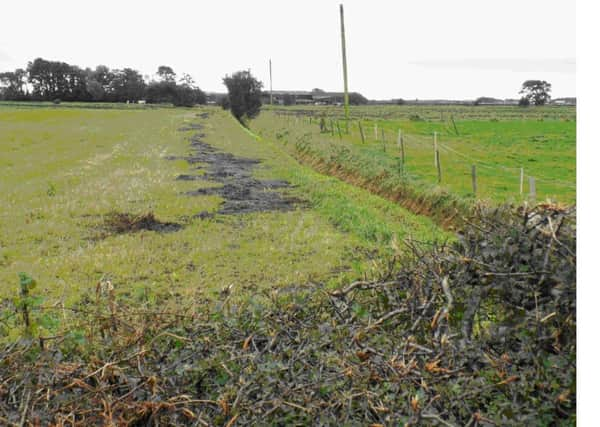On the farm with the American GIs


Jarvis Carr Farm is on Garstang Road, in Pilling. The fields now show no traces of the 45 gallon drums, the Nissen huts, the cookhouse and the tracks where the GIs’ jeeps scuttled busily about, and 600 American soldiers had their temporary home.
Richard “Shirts” Jenkinson still lives at the farm and remembers the camp vividly. The camp was a fuel dump for allied supplies – fuel came in overnight on the nearby Garstang to Pilling railway, brought by the “Pilling Pig” as it was always known, named after the noise of the whistle of one of the first engines, which made a sound very like the sound of a squealing pig. The name was passed on through the generations of engines.
Advertisement
Hide AdAdvertisement
Hide AdThe train transported the fuel at night, and to fulfil blackout requirements, in the make-do-and-mend spirit of the time, had a cleverly designed cover for the funnel – a wet blanket.
The camp ran from October 1942 to April 1943 and though it had tents and huts, not all the troops lived there, many were billeted in Garstang. The soldiers still used the area for entertainment – the village hall dance floor was worn out with the more uninhibited American dancing and the GIs paid for a new one.
They would hide their uniforms around the camp, put on civvies and go into Blackpool and Morecambe, come back in whatever state, and take the consequences.
The first troops were made up of mostly white soldiers, but the second cohort was a regiment of mostly black American soldiers who were remembered as being incredulous at the friendly reception the locals gave them, much friendlier than the accepted racism they found at home.
Advertisement
Hide AdAdvertisement
Hide AdThe camp was never intended as a permanent feature. Washing was done in sheds, accommodation was mostly in tents. There was a cookhouse and a separate officers’ mess, and the footpaths were wooden duckboards.
The only other permanent features were a brick fire hut, now part of a larger outbuilding, and a petrol pump – petrol rationing was not a problem in fuel dump. The remains of these last two features are the only visible signs the camp ever existed, those and the memories of older residents like Mr Jenkinson.
And why is he known as “Shirts?” Just like the Pilling Pig, everyone in Pilling seems to have a nickname, passed down through the generations like a family heirloom. Mr Jenkinson’s grandfather was a chimney sweep and always dirty and therefore had many changes of clothing, often left to dry on the hedges as was usual at the time, and the number of shirts he had was clear to all.